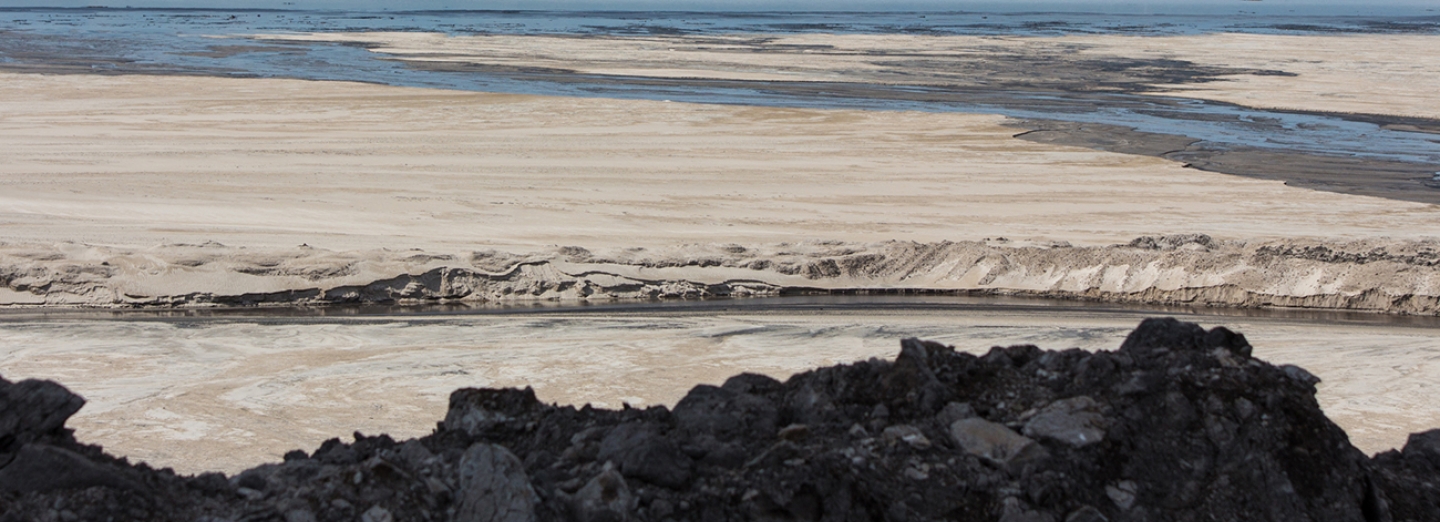Our approach to tailings management is guided by the Government of Alberta’s Lower Athabasca Region: Tailings Management Framework for Mineable Athabasca Oil Sands (TMF). Designed to monitor and manage long-term fluid tailings growth and reclamation in the Lower Athabasca region, the framework
- provides policy direction to help manage tailings volumes;
- describes a holistic approach to allow for timely and progressive reclamation;
- provides objectives on how to manage existing and new fluid tailings;
- aims to reduce fluid tailings accumulation;
- promotes innovation among industry, the AER, and government to ensure that fluid tailings are managed, treated, and reclaimed appropriately; and
- requires companies to increase their monitoring and reporting.
All tailings ponds must be ready to reclaim within ten years after a mine’s life ends (i.e., the year in which the mining of bitumen is completed for an AER-approved mine plan). We share application notices for tailings management plans on our website.
New Requirements
We used the TMF to create Directive 085: Fluid Tailings Management for Oil Sands Mining Projects. Directive 085 replaced the former Directive 074: Tailings Performance Criteria and Requirements for Oil Sands Mining Schemes.
Directive 074 was first introduced to slow the growth of tailings ponds by creating standard requirements for all projects. Companies were required to track the amount of tailings they had dried using technology to remove water from the tailings and make the area accessible for reclamation.
Released in July 2016, Directive 085 now measures tailings reduction using the overall volume of fluid tailings. It goes beyond Directive 074 by tackling both existing fluid tailings and new fluid tailings growth. This directive does not impose standard requirements across all projects.
Compliance and Enforcement
We have full authority to enforce our tailings requirements under the Environmental Protection and Enhancement Act, Water Act, and Public Lands Act. If a company isn’t following our requirements, it will face consequences. We will also share our enforcement and compliance actions on the Compliance Dashboard.
Some of our compliance and enforcement tools include
- more frequent and detailed inspections,
- more stringent planning requirements,
- more frequent reporting,
- enforcement orders,
- shut down of operations,
- financial penalties, and
- prosecution.
Beyond these tools, the TMF introduced regulatory financial tools under the Mine Financial Security Program and a compliance levy.
The TMF also provides a level-based system to manage fluid tailings. The system, summarized below, ensures that tailings do not grow to the point where it is not possible to process and remove them from the landscape within a chosen timeframe.
- Level 1: The project is operating in line with its approved tailings profile.
- Level 2: Conditions indicate an increasing level of risk associated with an increasing volume of fluid tailings at a project.
- Level 3: The volume of tailings has exceeded the volume that would be possible to get ready to reclaim within ten years of the end of the mine’s life.
- Level 4: The total volume limit of fluid tailings for the project has been exceeded.
Protecting Birds and Other Wildlife
The framework does not focus on other issues related to tailings, like dam safety and the safety of ducks, geese, or other birds. However, we have other requirements to protect birds. Every oil sands mining operation must submit and follow a wildlife plan that prevents wildlife from being harmed.
History of Tailings Management
Tailings ponds take decades to build and cannot be reclaimed overnight. However, we continue to work with companies and the Government of Alberta to find new and innovative ways to reduce tailings. See a timeline of events that have shaped tailings management in Alberta.


